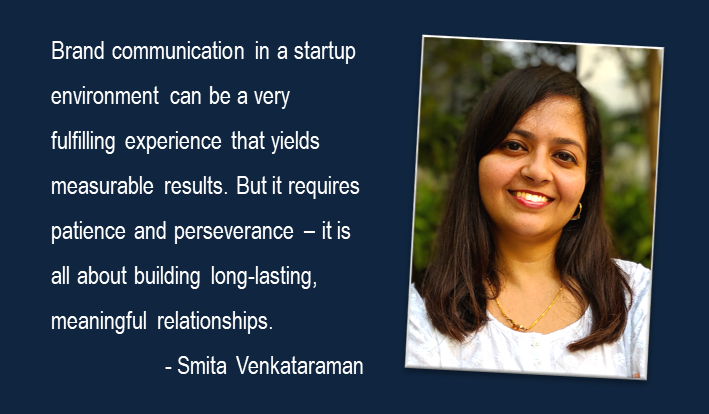A startup is based on a powerful idea, a grand vision – that seeks to change the world through unique solutions that address customer needs. Therefore, communicating what the startup seeks to bring to its stakeholders, is of quintessential importance. Communicating the idea, what it stands for, who it serves, its value proposition, and what makes it different from others a.k.a. its USP – these are the building blocks to effective brand communication.

You want to ensure that your brand ‘rests’ in the mind of your target audience. That it is viewed as a thought leader in your space. And that it is an informed voice that generates trust and loyalty.
Using the acronym ‘R.E.S.T.’, here are four quick tips that can set the brand ball rolling for your startup in that direction:
- R – Research and analyse – there are three aspects that need to be researched.
- Industry : the various publicity channels where similar brands are operating, networking fora, trade associations and industry committees, accreditation and certification institutes within the sector, promotion councils; journals and trade magazines that provide industry coverage, emerging macro trends, etc. If the start up is operating in a futuristic space as a pioneer of products/services that belong to the future, then custom channels of consumer education and awareness (mapped to the desired target audience) would come under this category.
- Peers : SWOT analyses of current and potential competitors, deep understanding of the 4 Ps (product/service, price, place, promotion), and the relative positioning of the startup’s offerings that would help articulate its USP (unique selling proposition)
- Audience : a detailed study of customer segments based on geographic, behavioural, demographic and other key indicators would help in understanding their unique needs and preferences, expected solutions, and the channels they tend to visit frequently for purchase decisions
- E – Examine and evaluate – based on the above data, this may be a good time to create / finalise / tweak one’s brand logo (if not already done), ensure the tagline reflects the USP, and list the features, advantages and benefits. At this stage, it is critical to identify the right channels of communicating the brand. And that opens up a plethora of media options – digital (including social), electronic, print, event-based, etc. Given the highly networked world we live in today, it is prudent to choose a brand communication strategy that effectively blends these channels in the right proportion, based on the product or service type, its target audience, and the desired impact. A social media presence for example, would need to be consistent across various social media tools, with an aim to educate, create awareness, and generate action or desire to buy. Channels that trigger user reviews and word-of-mouth are powerful in generating peer-driven brand loyalty, and generating new leads.
- S – Style and personality – this is where content reigns supreme. ‘Keep it short and simple’ – this done-to-death principle of communication, finds deep relevance here. Create visually catchy, crisp and precise content that speaks to the consumer directly – in his/her language. Be careful not to come across as preachy. Bring in a sense of humour, if possible. And above all else, create a brand personality. If your brand was a person – what would that person be like? Witty, cool and funky? Elegant and wise? Caring and protective? Luxurious and rare? Fun and quirky? Or maybe a combination of them all? Whatever the brand personality is – communicate it – regularly and consistently. Choose visuals and text that reflect this personality. Consumers like associating with brands that have a personality that resonates with them.
- T – Timing and type – yes, there is a thing called ‘overdoing’. Bombarding consumers at every step with loud messaging in their face puts customers off. Today, the unsubscribe link and unfollow button probably gets hit faster than a speeding train. Ensure your brand communications are aligned with a ‘user experience’ strategy. How do you want your customers to feel about your messages? How often do you think they want to see the brand? And can it be tailored to a ‘schedule of communications’ – e.g. once a week, once a month, at the time of onboarding, at the time of repeat purchase, during a peak sales season, as a compelling thought leader on social media, as an event partner that consumers value, and so on. And yes, when you communicate – personalise it! It shows how much you value them. And these genuine experiences lead to great word of mouth – leading to new leads and repeat sales.
Brand communication in a startup environment can be a very fulfilling experience that yields measurable results. But it requires patience and perseverance – it is all about building long-lasting, meaningful relationships. It requires creative forward thinking and an ever curious outlook to see what works and what does not. Above all, no matter which channel or method you use, make sure you measure for impact.
The views and opinions published here belong to the author and do not necessarily reflect the views and opinions of the publisher.



Be the first to comment on "Dial B for Branding"